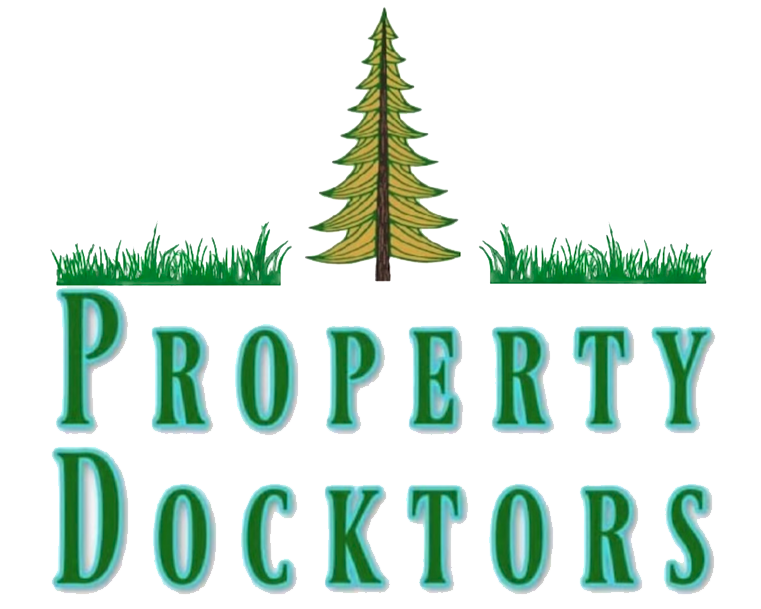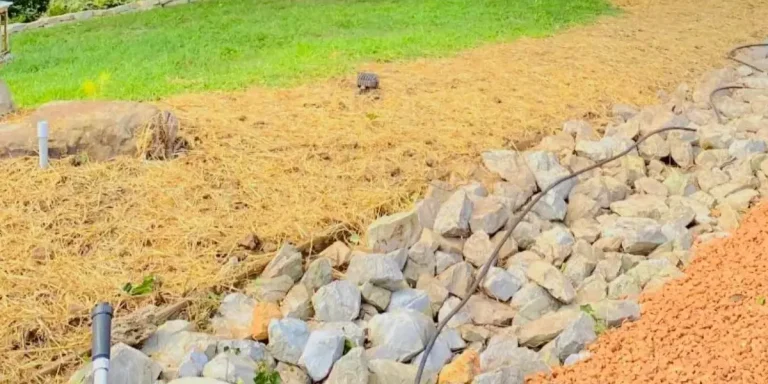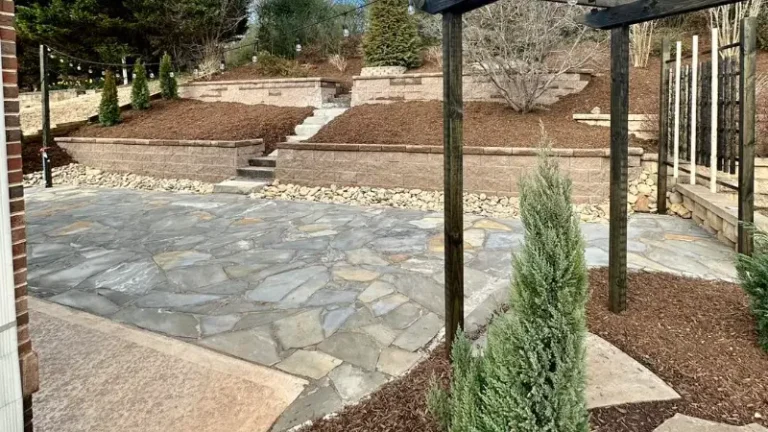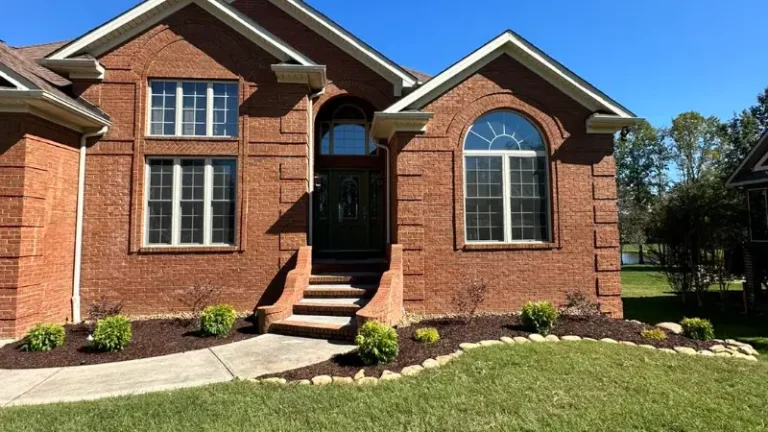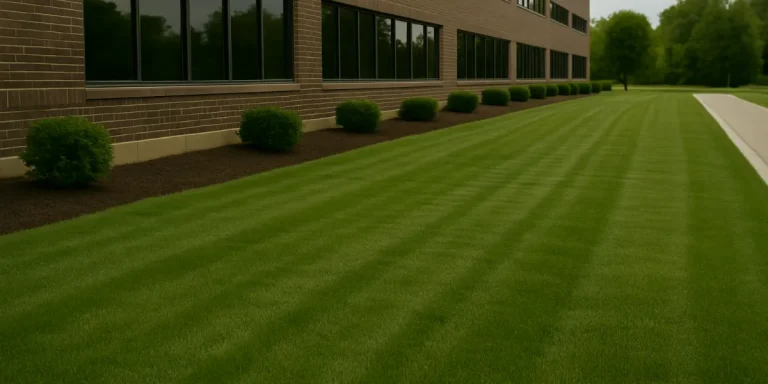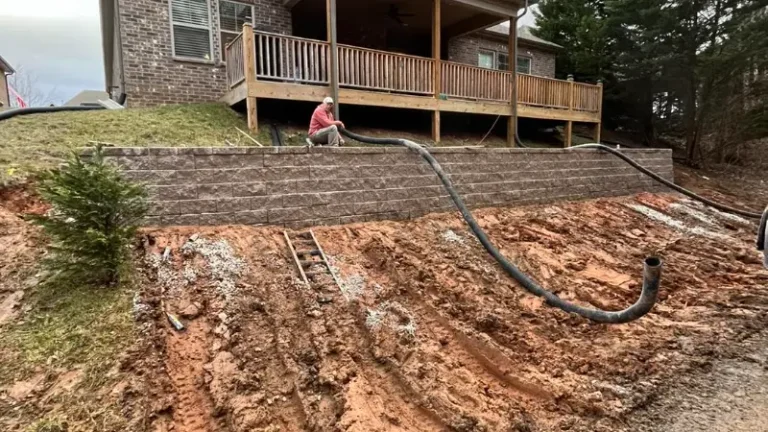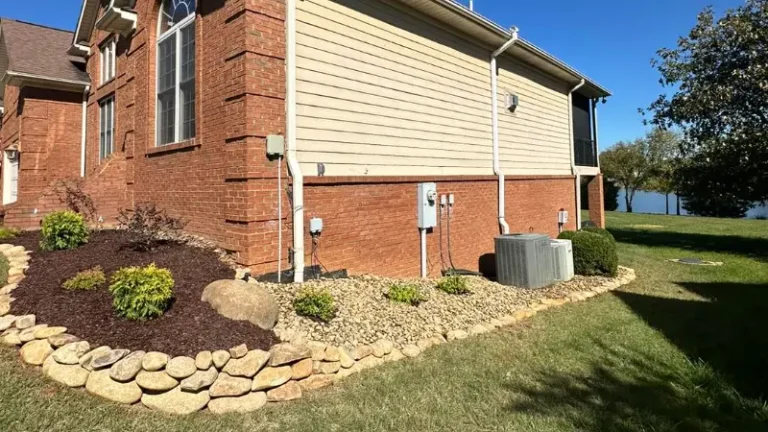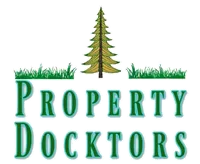How to Fix Low Spots in Turf Without Replacing It
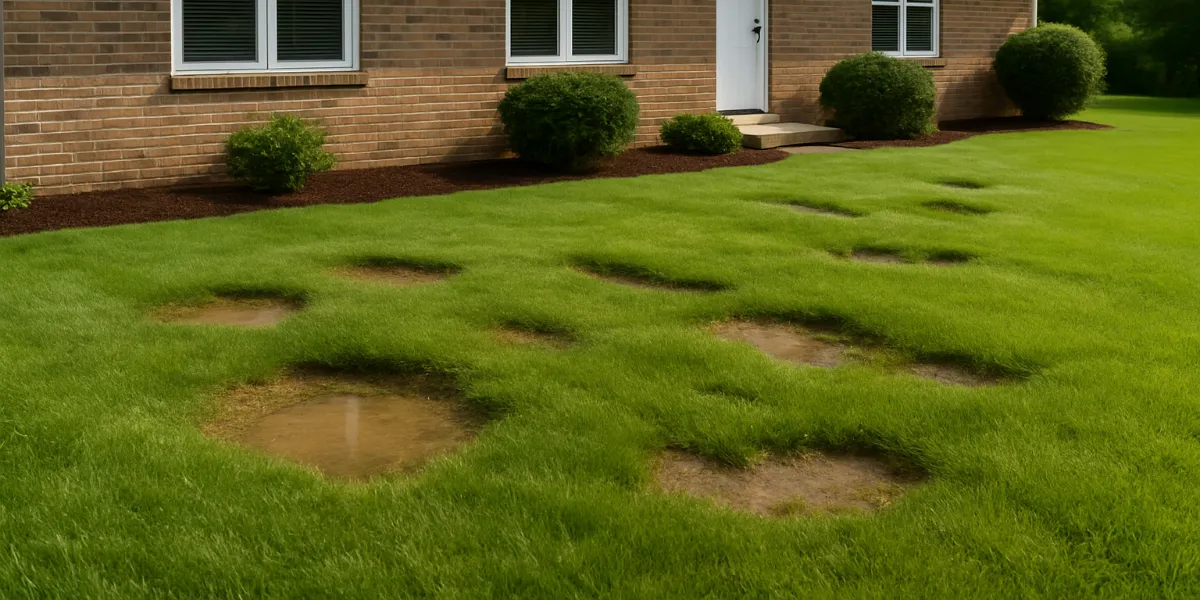
Low spots in your lawn aren’t just unsightly—they can create standing water, encourage mosquito breeding, damage turf health, and even become trip hazards. The good news? You don’t always need a full lawn replacement to fix the issue.
At Property Docktors, we specialize in practical turf restoration solutions that improve your yard’s appearance and performance without starting from scratch.
What causes low spots in turf?
Before you can properly fix a sunken or uneven area in your lawn, it’s essential to understand why it formed in the first place. Low spots are usually symptoms of an underlying issue—and if that root cause isn’t addressed, the problem will return again and again. Here are the most common culprits:
-
- Soil compaction – Repeated foot traffic, lawn equipment, or even the natural settling of soil over time can compress the ground. This prevents water, air, and nutrients from reaching grassroots and often results in visibly lower, thinning patches of turf.
- Poor drainage – If water doesn’t drain properly, it can pool in certain areas and slowly erode the soil. Over time, this creates soggy, sunken spots that get worse after every rainfall. These areas can also become breeding grounds for lawn diseases.
- Tree root decay or removal – When large trees are removed or die off, their underground roots begin to decay. As the roots break down, the soil above collapses into the void left behind, creating uneven depressions in the lawn.
- Improper grading – If your yard wasn’t graded correctly during installation—or has settled unevenly since—low points may form naturally, especially along slopes or near retaining walls.
- Buried debris or stumps – Old tree stumps, construction materials, or organic waste buried beneath the surface can rot and break down over time. Once they decompose, the turf above may drop down, creating a noticeable low spot.
Identifying the real cause behind your lawn’s low spots is critical for choosing the right solution—whether that’s core aeration, topdressing, drainage work, or regrading. If you're not sure what's causing the issue, Property Docktors can assess your turf and create a plan that restores both the health and appearance of your lawn.
Signs your lawn has low spots
Low spots in your lawn can be easy to miss—until they start causing visible damage or practical problems. They often show up subtly at first, but over time they lead to poor lawn health, drainage issues, and frustrating mowing experiences. Keep an eye out for these common warning signs:
-
- Pools of water after rainstorms
If water consistently collects in certain areas instead of running off or soaking in, it's a strong indicator of a depression or drainage problem. Standing water not only drowns grass roots but can also attract pests and promote fungal growth. - Yellowing or thinning grass in specific zones
Grass in low spots often struggles due to excess moisture, poor airflow, or compaction. These patches may appear pale, thin, or slow to grow compared to the rest of your lawn. - Uneven mowing results
When your mower scalps the grass or leaves behind uneven cuts, it's often due to dips or low spots that make the blades sit too low in certain areas. This can stress the turf and make the problem worse over time. - Soft, spongy ground underfoot
Turf that feels unusually soft or mushy when walked on—especially after rain—is likely sitting over compacted or eroded soil. This often signals poor drainage or decaying organic matter beneath the surface. - Moss growth or algae buildup
Persistent dampness in low areas can create the perfect environment for moss or algae to take over, signaling that the turf isn’t getting the drainage or sunlight it needs to thrive.
- Pools of water after rainstorms
If you’re noticing one or more of these signs, your turf is likely suffering from low areas that need to be corrected. At Property Docktors, we offer targeted solutions like core aeration, topdressing, and drainage correction to fix low spots and restore the health and appearance of your lawn.
How to fix low spots without replacing your lawn
You don’t always need to start from scratch to fix a sunken or uneven lawn. In many cases, targeted grading and soil improvements can restore your turf’s health and appearance—without the cost or disruption of full lawn replacement. At Property Docktors, we tailor our approach based on the severity and cause of the issue. Here’s how we fix low spots while preserving your existing lawn:
1. Topdressing with soil or compost
This is the simplest and most lawn-friendly method. We spread a thin layer of topsoil, compost, or a soil-compost blend over the low areas and gently work it into the grass with a rake or leveling tool.
-
-
- Best for shallow dips under 1 inch
- Applied during the growing season (typically spring or fall for best results)
- Improves elevation gradually without smothering healthy turf
- Enhances soil quality, boosting microbial activity and root growth
-
This technique may be repeated seasonally to build up low areas slowly and safely.
2. Layering with sand and soil mix
When low spots are deeper—generally 1 to 3 inches—we use a custom mix of screened topsoil and sand. This combo provides a firmer base while still encouraging water infiltration and healthy turf growth.
-
-
- Ideal for depressions up to 2–3 inches deep
- Sand component reduces compaction and promotes drainage
- Blended material supports root establishment through the repaired zone
- Smooths out surface contours for better mowing and water flow
-
Multiple light applications may be used to prevent shocking the turf or creating new compaction.
3. Core aeration followed by topdressing
If compacted soil is contributing to the low spots, core aeration is a key part of the solution. We use professional equipment to remove small plugs of soil, allowing the lawn to "breathe" and enabling better penetration of nutrients, water, and topdressing material.
-
-
- Breaks up compacted soil, which can contribute to low or spongy areas
- Creates space for topdressing materials to settle more evenly
- Boosts turf health and resilience, especially when combined with overseeding
- Improves long-term water absorption and root development
-
Aeration is often a critical step before applying any soil mix, especially in high-traffic zones.
4. Grading and resetting small lawn sections
For more severe depressions or drainage-related low spots, we may need to remove a portion of turf, regrade the underlying soil, and either reinstall the existing sod or patch the area with new sod installation.
-
-
- Targets deeper or more widespread problem zones
- Corrects underlying grading issues, not just surface-level symptoms
- Helps prevent water pooling, erosion, and runoff damage
- Pairs well with drainage improvements, like French drains or swales
-
This approach offers a more permanent fix and is especially useful near foundations, walkways, or patios where precision grading matters most.
Fixing low spots is about more than just adding soil—it’s about understanding the cause, choosing the right materials, and applying expert techniques that restore both form and function. At Property Docktors, we combine technical knowledge with hands-on experience to ensure the repair lasts and blends seamlessly with your existing landscape.
Why fixing low spots matters
Unaddressed low areas do more than make mowing difficult. They can:
-
- Lead to chronic drainage issues and soggy turf
- Encourage fungal diseases due to excess moisture
- Stress your lawn, making it thin, patchy, or weed-prone
- Cause long-term erosion that damages nearby landscaping
By proactively leveling these problem zones, you prevent future issues and protect your lawn’s health.
Professional turf repair vs. DIY fixes
While it’s tempting to throw a bag of topsoil on a low spot, DIY fixes often fail because they don’t address the cause. At Property Docktors, we assess the underlying issue, choose the right materials, and complete the job using proper techniques.
Our goal is always long-term performance—not just a quick cosmetic cover-up.
Proudly serving Westfield and surrounding areas
Property Docktors offers turf repair and grading services throughout East Tennessee, including:
-
- Westfield
- Lenoir City
- Loudon
- Knoxville
- Farragut
- Tellico Village
- Oak Ridge
- Rarity Bay
- Kahite
Get a healthier, level lawn today
If your lawn has persistent low spots, let the pros at Property Docktors help. We’ll evaluate your yard, explain your options, and create a cost-effective solution that restores your turf’s beauty and function.
We proudly serve commercial and residential clients throughout Westfield and surrounding East Tennessee communities. Reach out today for a quote or consultation.
